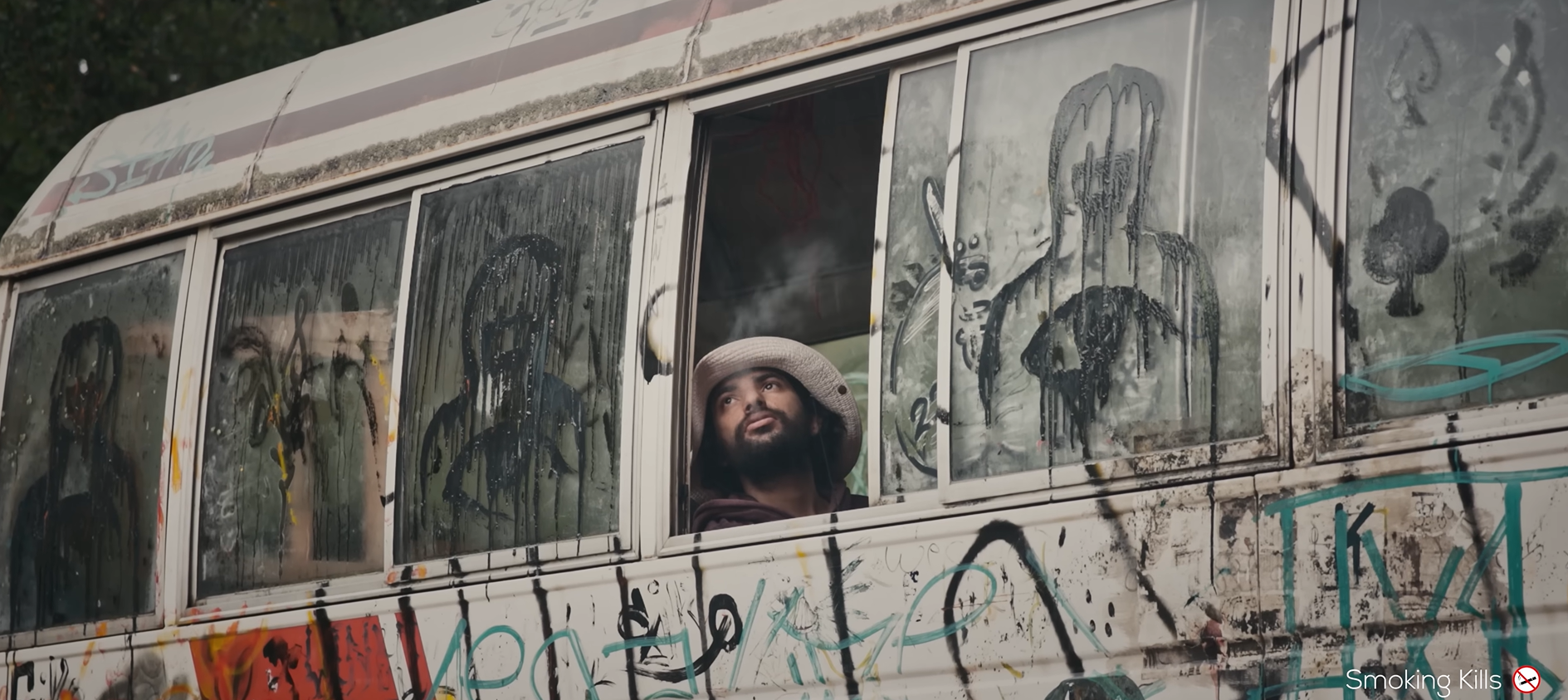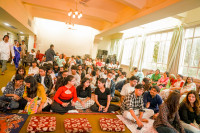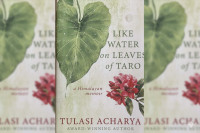Culture & Lifestyle
Pursuing art at his own pace
Growing up in the birthplace of the Lord Buddha, Nabin Chandra Aryal learned that art, like enlightenment, takes time and stillness.
Sanskriti Pokharel
Growing up in Kapilbastu, near the remnants of the ancient palace of the Lord Buddha in Tilaurakot, artist Nabin Chandra Aryal never imagined he would one day devote his life to art.
As a schoolboy, he was known for his jokes. When teachers asked if anyone wanted to tell one in front of the class, his hand was always the first to rise. He would walk to the front, crack jokes, and watch his classmates erupt in laughter. “Everyone clapped,” he recalls. “It gave me a sense of identity.”
Being the class entertainer also shaped his path to becoming a performer—someone who could move people through expressions.
Teachers began calling him during free periods to lighten the room. “That’s how it all began,” he says. “It gave me confidence that I could do something different.”
In grade six-seven, Aryal started doing mimicry of Nana Patekar, Sunny Deol, and other film icons. Around the same time, he was drawn to literature. He would devour every issue of Muna magazine but never dared to send his own writing.
That changed when a tenant at his home, a university student majoring in English, started taking him to poetry gatherings. “He encouraged me to write for myself, not to impress others,” Aryal says. “He said the first draft is never perfect, but you’ll improve by trying.”
Those words encouraged him to write poetry. “At first, I wanted my poems to sound deep and hard to understand,” he laughs. “But now I believe simplicity is vastness. A good writer makes both a layman and a PhD scholar understand the same line.”
He pauses and adds, “The most difficult thing is to write simply.”
After finishing school, Aryal moved to Kathmandu to pursue higher studies. During grades 11 and 12, he and a classmate began composing haikus during math class. “It taught me how to express something big in a few words,” he says. Then, he joined theatre and realised it combined everything he loved: expression, emotion, and words.
In 2014, he enrolled in Rangsarathi Theatre for a 45-day workshop. He performed street plays at Banepa bus stops before joining Sarwanam Theatre, where he co-wrote ‘Nirwan’, a batch production. His story, inspired by the Lord Buddha, was chosen as the central narrative. “Being from Kapilbastu, Buddha’s presence was always there,” Aryal says. “But I wanted to show him not as god but as human, with desires and doubts.”
Even though Aryal wasn’t credited as a writer, he wasn’t discouraged. “Just knowing my story got selected was enough,” he says. “It gave me confidence.”
After two plays at Sarwanam, acting opportunities slowed. Unsure what to do next, Aryal briefly prepared for the public service commission exams. He even passed the first paper. But his heart remained with the theatre. A friend, who believed in his dream, lent him money to join Sunil Pokharel’s acting class.
“Pokharel sir said, ‘If you came here to learn acting, I’ll return your money. I teach life,” Aryal recalls.
During the class, Aryal performed in ‘Hariyo Dhunga’. The performance earned applause, but after that, there was silence. For almost two years, no new roles came. “I got anxious,” he says. “But then I remembered what sir said: when you don’t have projects, read, write, and watch.”
He then turned to books and films. Aryal devoured literary classics like ‘Metamorphosis’ and ‘Lolita’, works by Tolstoy, Shankar Lamichhane, and Parijat. He explored the European cinema of Sergio Leone, Alfred Hitchcock, and Akira Kurosawa and studied how actors shifted from subtlety to intensity depending on the story.
That year of stillness deepened his artistry. “When I don’t act, I write or direct. When I don’t write, I act,” he says.

In 2017-18, he wrote ‘Kaagtali’, a play released this year, his directorial debut. The process was collaborative because the actors wrote about 80 per cent of the dialogues. “I didn’t want every character to sound like me,” he says. “They had to bring their own words, their own truth,” says Aryal.
Aryal wanted live music for the play but couldn’t find musicians. Instead of abandoning the idea, he made it a creative choice by adding a radio setup. Set in 1950s Nepal, ‘Kaagtali’ adopted a radio-play style, echoing an era when radio was central to storytelling.
‘Kaagtali’ explores how privilege hides truth and false appearances are built. “On the first day, I invited everyone I knew,” Aryal says. “But from the second day, I was doubtful if anyone would come. However, people kept coming.”
Veteran artists like Sunil Pokharel, Anup Baral, Akanchha Karki, and Sudam CK attended the show. Pokharel told him, “I’m retiring from direction, but I believe you’ll carry my legacy forward.”
Outside the theatre, Aryal has acted in music videos, including ‘Mann Chari’. It is inspired by the film ‘Into the Wild’. To convey pain in the video, Aryal slept only two hours a night for nearly a week so the fatigue would reflect in his eyes.
Besides ‘Mann Chari’, his performances in ‘Jingadi Sarara Motor Gadima’, ‘Saili’, and ‘Udi Janey Maan’ have been well-received by audiences.
Aryal has also been working on ‘Teentara’, an indie film he co-wrote, co-produced, and acted in. The project will be released next year.
Moreover, he wants to contribute to the Gen Z movement by choosing roles and creating stories touching freedom, identity, and social responsibility.
“As artists, our job is to hold up a mirror to society. The Gen Z movement is about questioning and demanding change, and that’s what art does too,” he says.




 11.12°C Kathmandu
11.12°C Kathmandu













%20(1).jpg&w=300&height=200)

